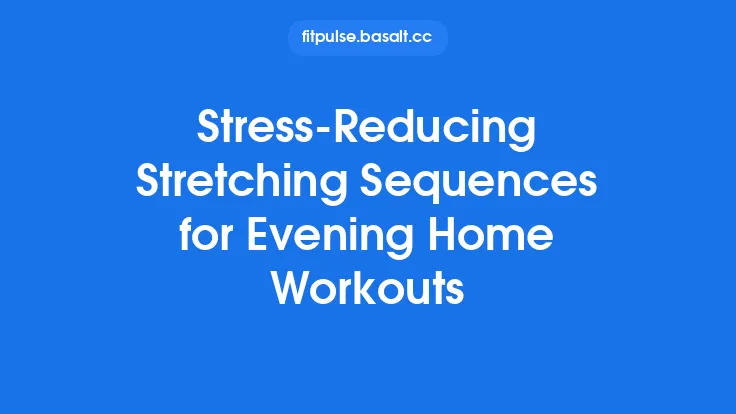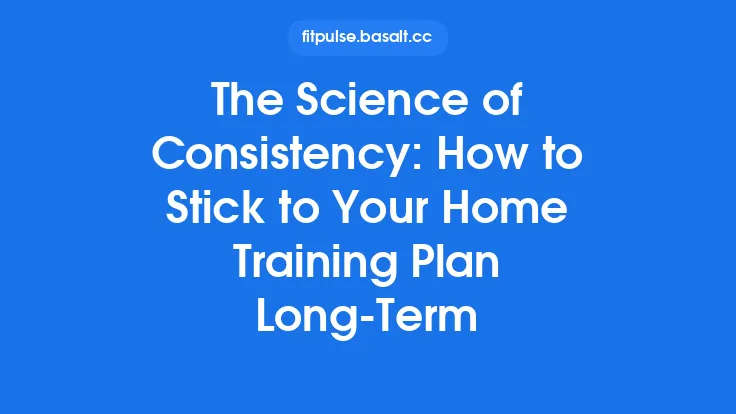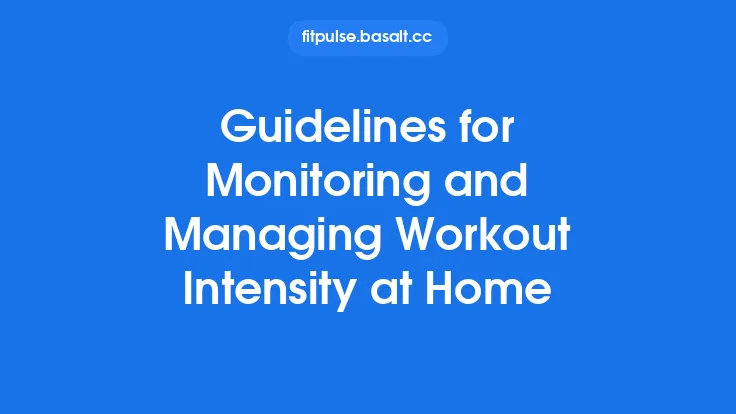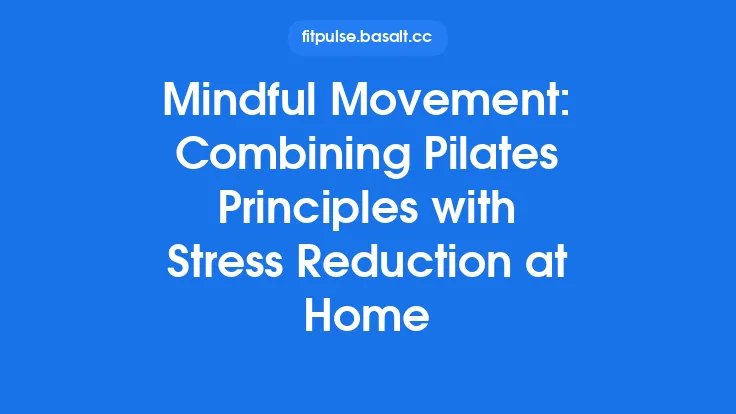Yoga is one of the most accessible tools for managing everyday stress, and its popularity has surged as more people look for effective ways to unwind without leaving the house. While many practitioners focus on the aesthetic or spiritual aspects of a practice, the real power of yoga for stress relief lies in the science behind its flowing sequences. By understanding how a well‑designed series of movements influences the body’s stress response, you can craft a home routine that consistently lowers tension, improves mood, and supports long‑term resilience.
The Physiology of Stress
When you encounter a stressor, the hypothalamic‑pituitary‑adrenal (HPA) axis activates, prompting the release of cortisol and adrenaline. These hormones prepare the body for a “fight‑or‑flight” response: heart rate rises, breathing quickens, and muscles tense. While useful in short bursts, chronic activation leads to:
- Elevated resting cortisol – linked to sleep disturbances, weight gain, and impaired immune function.
- Reduced heart‑rate variability (HRV) – a marker of autonomic flexibility; low HRV is associated with anxiety and poor stress coping.
- Neuroinflammation – prolonged stress can increase inflammatory cytokines, affecting mood and cognition.
A successful stress‑relief strategy must therefore counteract these physiological patterns, restoring balance between the sympathetic (fight‑or‑flight) and parasympathetic (rest‑and‑digest) branches of the autonomic nervous system.
How Yoga Flow Impacts the Autonomic Nervous System
Dynamic yoga sequences—often called “flows” or “vinyasa”—create a rhythmic interplay of movement and brief rests that directly modulates autonomic tone:
- Movement‑Induced Parasympathetic Activation – Gentle, continuous motion stimulates mechanoreceptors in muscles and joints, sending afferent signals to the vagus nerve. This promotes parasympathetic dominance, lowering heart rate and blood pressure.
- Intermittent Holding Phases – Brief static holds (e.g., Warrior II, Triangle) provide micro‑stressors that train the body to tolerate mild tension, improving autonomic flexibility.
- Transition Timing – Smooth transitions between poses maintain a moderate heart‑rate elevation without the spikes typical of high‑intensity exercise, encouraging a balanced sympathetic‑parasympathetic response.
Research using heart‑rate variability monitoring shows that participants who engage in a 20‑minute vinyasa flow experience a significant increase in HRV within minutes, indicating a rapid shift toward parasympathetic activity.
Neurochemical Changes Induced by Dynamic Asanas
Beyond autonomic regulation, yoga flow influences brain chemistry in ways that directly alleviate stress:
- Endorphin Release – The rhythmic nature of flow triggers the brain’s reward pathways, increasing endogenous opioids that produce a sense of well‑being.
- Serotonin Modulation – Repetitive, purposeful movement has been shown to boost serotonin synthesis, contributing to mood stabilization.
- GABA (Gamma‑Aminobutyric Acid) Elevation – Studies using magnetic resonance spectroscopy reveal higher GABA levels after a series of flowing postures, which dampens neuronal excitability and reduces anxiety.
These neurochemical shifts complement the autonomic effects, creating a multi‑layered stress‑reduction response.
The Role of Rhythm and Sequencing in Stress Modulation
A yoga flow is more than a random collection of poses; the order, tempo, and pacing are crucial for stress relief.
| Element | Why It Matters | Practical Tip |
|---|---|---|
| Opening Grounding | Sets a calm baseline, activates the parasympathetic system. | Begin with a few minutes of seated or standing grounding, focusing on slow, natural breath. |
| Dynamic Warm‑Up | Increases circulation, prepares muscles for deeper work. | Incorporate Sun Salutation variations (Surya Namaskar A & B) at a moderate pace. |
| Peak Poses | Target larger muscle groups, create mild physiological stress that the body learns to resolve. | Include standing balances (e.g., Tree Pose) and gentle backbends (e.g., Cobra). |
| Cooling Down | Gradually lowers heart rate, reinforces parasympathetic dominance. | Transition to forward folds and supine twists, moving slower than the warm‑up. |
| Closing Integration | Allows the nervous system to settle, consolidates neurochemical benefits. | End with a brief Savasana (5‑7 minutes) focusing on body awareness. |
Maintaining a consistent rhythm—typically 3–5 breaths per pose—helps synchronize movement with internal physiological cycles, reinforcing the calming effect.
Designing an Effective Home Yoga Flow for Stress Relief
When building a home routine, consider the following framework:
- Duration – 20–30 minutes is optimal for stress reduction without causing fatigue.
- Space – A clear, uncluttered area of at least 6 × 6 feet allows free movement.
- Equipment – A yoga mat, a block, and a strap are sufficient; props support alignment and reduce strain.
- Sequence Blueprint
- Opening (2–3 min): Gentle neck rolls, shoulder shrugs, and a few slow, deep breaths.
- Warm‑Up (5 min): Sun Salutation A (3 rounds) at a steady pace.
- Core Flow (12–15 min):
- Standing Series: Warrior I → Warrior II → Reverse Warrior → Side Angle (hold 3–5 breaths each).
- Balancing Segment: Tree Pose → Half Moon Pose (optional block).
- Backbend Segment: Cobra → Upward‑Facing Dog → Low Lunge with a gentle backbend.
- Cool‑Down (5 min): Forward fold, seated twist, and supine hamstring stretch.
- Integration (3–5 min): Savasana with a focus on body sensations.
Adjust the number of rounds or hold times based on personal fitness level and time constraints.
Key Asanas and Transitions for Calming Effect
While any pose can be beneficial, certain asanas are consistently linked to stress reduction due to their impact on the nervous system:
- Cat‑Cow (Marjaryasana‑Bitilasana): Mobilizes the spine, encourages diaphragmatic breathing, and gently stimulates the vagus nerve.
- Child’s Pose (Balasana): Provides a forward‑fold compression that activates the parasympathetic response.
- Standing Forward Fold (Uttanasana): Inverts blood flow slightly, promoting a calming effect on the brain.
- Supine Twist (Supta Matsyendrasana): Releases tension in the lumbar region and encourages spinal rotation, which can reduce muscular tightness associated with stress.
- Legs‑Up‑the‑Wall (Viparita Karani): A restorative inversion that lowers heart rate and improves venous return, often used as a transition into Savasana.
Smooth transitions—such as moving from Warrior II into Reverse Warrior without pausing—maintain the flow’s rhythm, preventing abrupt spikes in sympathetic activity.
Timing, Duration, and Frequency Recommendations
- Frequency: 4–5 sessions per week yield measurable reductions in perceived stress and cortisol levels.
- Session Length: 20–30 minutes balances effectiveness with practicality for most home environments.
- Progressive Load: Begin with 2–3 rounds of Sun Salutations and gradually increase to 5–6 as flexibility and endurance improve.
- Periodization: Incorporate a “recovery week” every 4–6 weeks where the flow is shortened and emphasis shifts to slower, more restorative poses.
Consistency is more important than intensity; a brief daily practice often outperforms occasional longer sessions.
Monitoring Progress and Adjusting the Flow
Objective tracking can reinforce habit formation and highlight physiological benefits:
- Heart‑Rate Variability (HRV) Apps: Measure baseline HRV in the morning, then record post‑flow HRV to observe acute changes.
- Perceived Stress Scale (PSS): Complete a short questionnaire weekly to gauge subjective stress levels.
- Mobility Checks: Periodically assess range of motion in hips, shoulders, and spine; improvements often correlate with reduced muscular tension.
If HRV or PSS scores plateau, consider:
- Adding a new peak pose (e.g., gentle backbend) to introduce a fresh stimulus.
- Slightly extending the cool‑down phase to deepen parasympathetic activation.
- Varying the tempo—slower flows can enhance mindfulness, while a slightly quicker pace may boost cardiovascular benefits.
Common Pitfalls and How to Avoid Them
| Pitfall | Consequence | Solution |
|---|---|---|
| Rushing Transitions | Increases sympathetic spikes, reduces calming effect. | Practice each transition slowly; use a metronome or count breaths. |
| Holding Poses Too Long | May cause muscular fatigue, leading to tension rather than release. | Keep holds within 3–5 breaths for most standing poses; longer holds only in restorative sections. |
| Neglecting Alignment | Can create joint strain, triggering stress rather than alleviating it. | Use props to maintain proper alignment; focus on neutral spine positions. |
| Practicing on an Empty Stomach | Low blood sugar can heighten irritability and reduce focus. | Aim for a light snack (e.g., fruit) 30–60 minutes before the session. |
| Skipping the Closing Integration | Misses the opportunity for the nervous system to settle. | Always end with at least 3 minutes of stillness, even on busy days. |
Integrating Mindful Awareness Without Formal Meditation
While the article avoids dedicated meditation topics, a subtle layer of mindful awareness can be woven into the flow:
- Sensory Check‑Ins: Briefly pause at the end of each pose to notice temperature, texture of the mat, or subtle shifts in muscle length.
- Micro‑Reflections: After a transition, ask yourself, “How does my body feel compared to the previous pose?” This encourages a non‑judgmental observation that reinforces the stress‑relief cascade.
- Intent Setting: Begin each session with a simple intention (e.g., “I welcome calm”) and revisit it mentally during the flow.
These practices deepen the neurophysiological benefits without requiring a separate meditation segment.
Conclusion
The stress‑relieving power of yoga at home lies in the science of movement, rhythm, and nervous‑system regulation. By constructing a thoughtfully sequenced flow—one that balances dynamic activation with calming transitions—you can tap into measurable physiological changes: reduced cortisol, enhanced heart‑rate variability, and favorable neurochemical shifts. Consistency, proper alignment, and mindful attention to the body’s signals turn a simple home practice into a robust, evergreen tool for managing everyday stress. Embrace the flow, listen to your body, and let the science of yoga guide you toward lasting calm.





